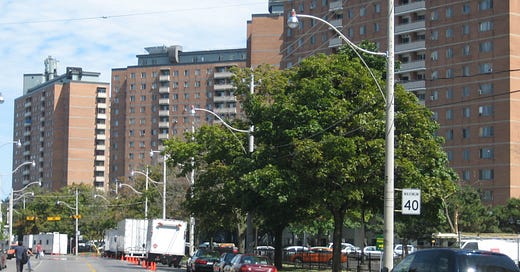New BiggerPockets Article: A Short History of Public Housing in the United States
...and the world for that matter. Of late, its performance leaves much to be desired

This is an excerpt from an article originally published on BiggerPockets.com
Housing affordability (or the lack thereof), as well as public housing, were major issues in the last presidential election. Vice President Kamala Harris planned to build three million new housing units while effectively punishing corporations with large portfolios of single-family homes through various policy proposals.
Some activists want to go even further. For example, a group named People’s Action wants to “decommodify” housing—or, in other words, make all housing in the United States government housing.
President Trump, for his part, ran on reducing grocery prices or inflation in general. Housing isn’t directly measured by the Consumer Price Index (CPI), but it still factors greatly in the cost of living. In Trump’s first term, he sought to cut the Department of Housing and Urban Development’s (HUD) budget, but was blocked by Congress.
It would not be surprising if Trump again tried to cut HUD’s budget despite public housing being long thought of as the third rail in politics. Indeed, it has a long history in the United States and the world over. And while the reasons behind public housing have been completely understandable, its results have often failed to live up to the promise.
Public Housing’s Earliest Beginnings
Examples (or quasi-examples) of public housing—i.e., housing provided by a governing authority to people subject to that government—have existed in one form or another since the dawn of civilization. That said, what we think of as the government or state doesn’t exactly translate to ancient or medieval civilizations.
Semantics aside, public housing still goes back a long way. For example, Deir el-Medina was a village of craftsmen and artists that built the tombs in the Valley of the Kings between the 18th and 20th Dynasties of the New Kingdom of Egypt (between approximately 1550 and 1080 BCE).
In ancient Rome, ordinary Roman citizens often lived in a kind of apartment building called an insula. These often shoddily constructed buildings were, unfortunately, quite susceptible to fire and, given their proximity to each other, made disasters like the Great Fire of Rome more likely to happen. The insula was a sort of pseudo-public housing, as they tended to be owned by wealthy Roman patricians, many of whom were senators who controlled Rome’s government.
And, of course, throughout history, there have been slave quarters, which, in a very exploitative way, could be seen as an extremely unpleasant form of public housing.
As we move from ancient times into the Middle Ages, concepts of property—at least in Europe—looked far different than they do today. Feudalism amounted to a series of pledges and obligations between lords and their vassals, with the king being at the top of the ladder.
To read the read the rest, please visit to BiggerPockets.com
You can find my other book, Awesomeness, here.
And the audiobook here.
And please subscribe to my YouTube channel.


